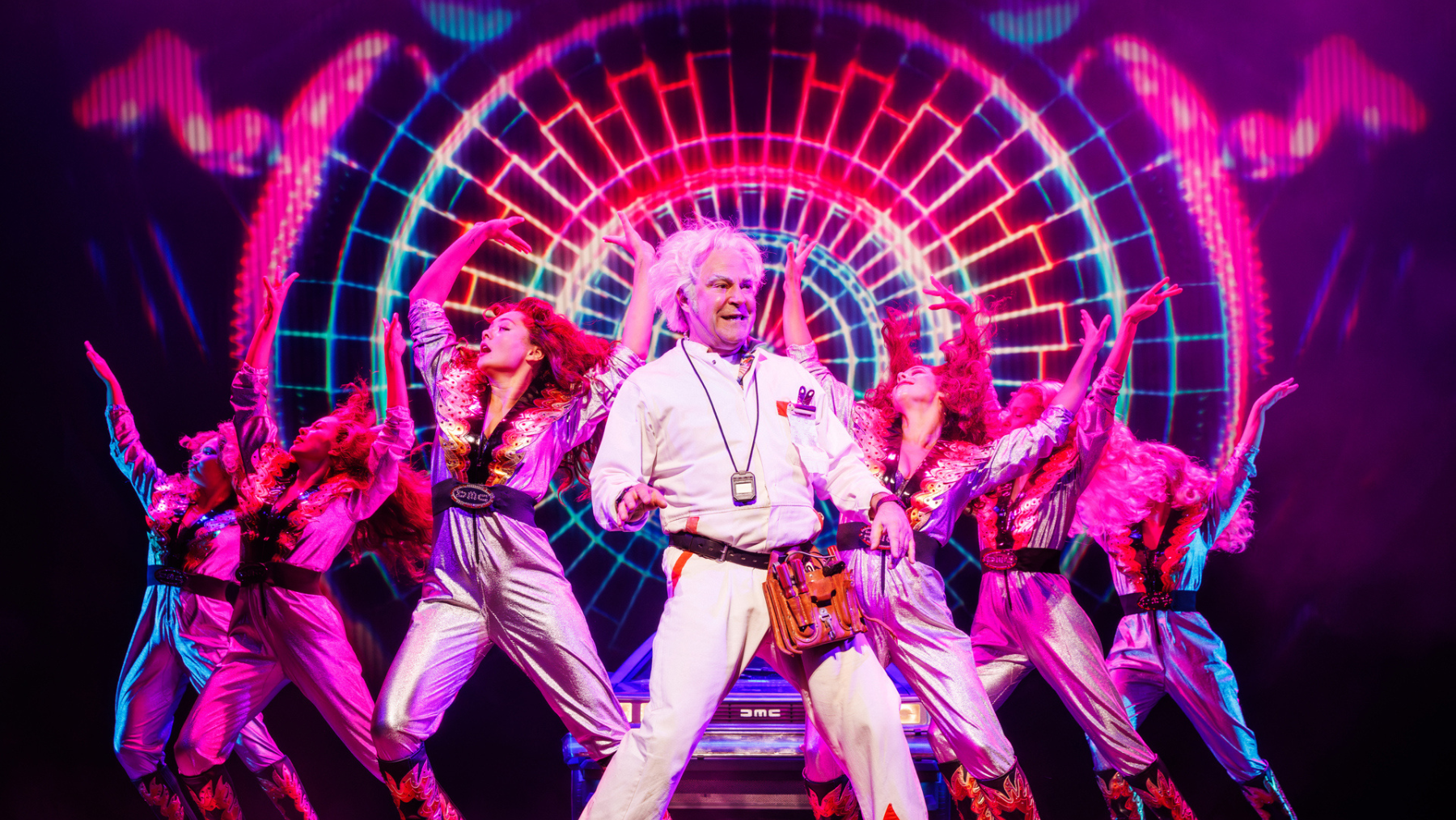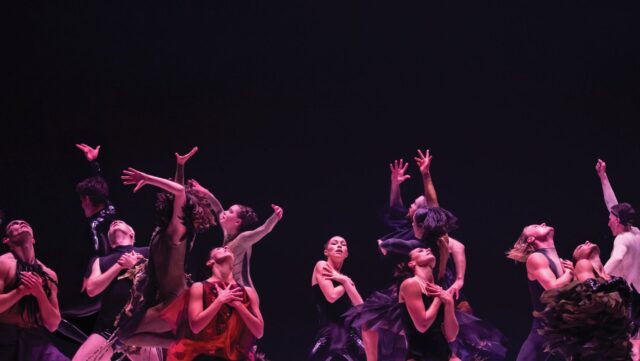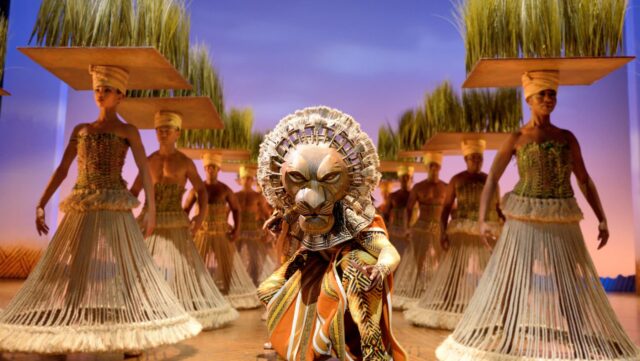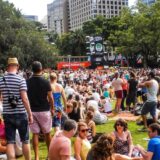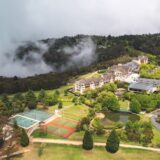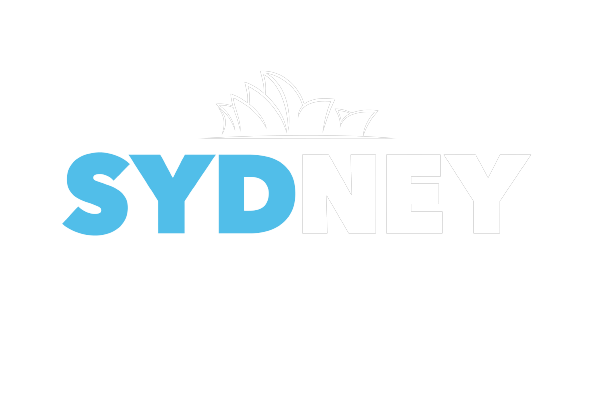- The musical Back to the Future had everything going for it: big stars, great props and ecstatic critics.
- Yes it has curtailed its run as producers couldn’t sell tickets at the right price to make it profitable.
- What does that say about our theatrical roster for 2026? Peter Lynch peeks behind the curtain.
Back to the Future: The Musical ignited real excitement in Sydney. The production – led by Tony Award winner Roger Bart as Doc Brown and newcomer Axel Duffy as Marty McFly – was visually spectacular and theatrically slick.
Reviews from outlets such as Limelight and The Scoop praised Bart’s “boundless energy and comic genius” and Duffy’s “sweet, endearing performance” that “owns the show from the minute he walks on stage”.
And the Sydney Travel Guide’s own reviewer said the stagecraft was stunning.
Yet now comes a twist in the time machine: the Australian production, backed by the NSW Government through agency Destination NSW, will close on 25 January 2026 – prematurely, considering the initial fanfare and a promised tour.
The reason: high costs and ticket sales.
So the question is: what does this mean for blockbuster musicals in Australia, for the theatre business in Sydney, and for 2026 productions that have been announced?
Why this matters to Australian shows
Blockbuster musicals — large‐scale, star‐led, high‐production‐value shows – depend on a critical mass of ticket buyers at premium prices to recoup the enormous upfront investment: set builds, lighting rigs, cast salaries, marketing, touring logistics.
The fact that Back to the Future was supported by state‐funded tourism/major‐events assistance makes the cancellation more significant: the taxpayer had a stake in its success.
When the Michael Cassells Group put on Hamilton, the hugely successful musical, in Sydney, producers spoke of weekly bills in six figures – a testament to how hard it is to profitably produce big shows in Australia.
Another cautionary tale is Opera Australia’s experience with The Phantom of the Opera, which put the company into a financial hole. When multiple large‐scale projects falter, the ripple effect isn’t just residual losses — it can undermine investor confidence, producer appetite for risk, and government willingness to underwrite or co-fund big musicals.
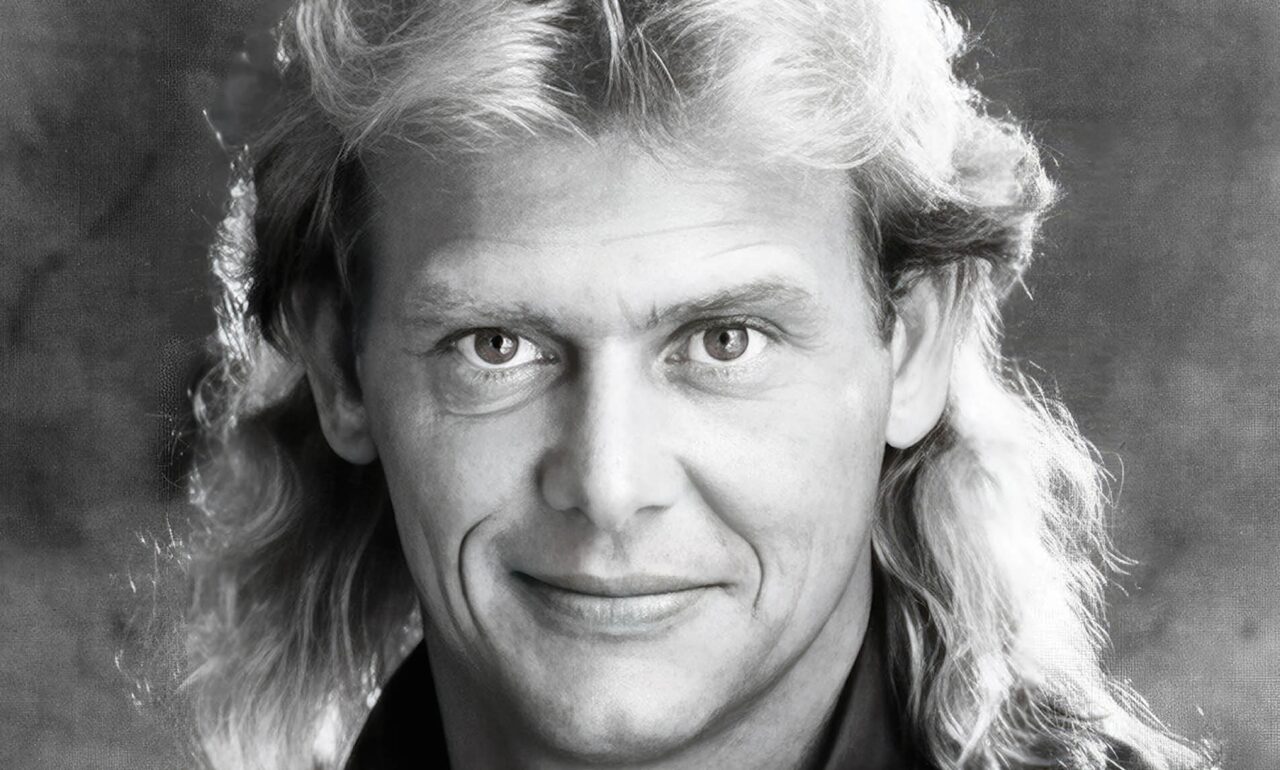
What’s coming up in 2026
Sydney’s theatre scene already has an impressive lineup for 2026. For example:
- Sydney Theatre Company (STC) will present a 13-production season featuring world-premieres and major local musicals: Whispering Jack: The John Farnham Musical, Bennelong in London, Strong is the New Pretty, the Australian premiere of Purpose, and a new musical adaptation of My Brilliant Career.
- Opera Australia’s 2026 season is robust: Madama Butterfly, Turandot, Hansel & Gretel, The Phantom of the Opera, The Merry Widow, Rigoletto, The Drover’s Wife, La Stupenda: A Joan Sutherland Celebration, My Fair Lady. Sydney Opera House
- Other companies such as Hayes Theatre Co and Bell Shakespeare have announced muscular seasons of musicals and new plays.
Will those 2026 shows feel threatened by the cancellation of Back to the Future? Probably not directly — but the broader context means caution is advisable.
Will they feel threatened? Short answer: Maybe no immediate threat, but elevated risk. Yes, the momentum is still strong. The forthcoming slate is diverse, not all reliant on mega-touring musicals.
STC’s mix of plays, new musicals and local stories means that even if one blockbuster falters, others can carry on. Audiences for theatre in Sydney are committed, and government backing via Destination NSW continues. For example, Destination NSW states it “spearheads a whole-of-government approach to visitor economy growth … invest[s] in world-class events”.
But there are warning lights. The premature closure of a major musical indicates:
- Cost pressure: high production values, import fees, casting, technology, staging – all rising costs internationally and locally.
- Demand sensitivity: ticket sales appear to have leaned heavily toward cheaper seats. The note “only occurred at lower prices” implies the premium seating and pricing strategy didn’t convert sufficient buyers.
- Government backing may not come with guarantees of commercial success: using public funds to support a show adds public risk when things go wrong.
- The opportunity cost: when one show fails or closes early, producers and investors can become more risk-averse; next time they may demand larger pre-sales, stronger localised casting, and smaller staging budgets.
Will this hit our theatres
For the theatre ecosystem in Sydney (and NSW more broadly), here are key implications:
- Government funding scrutiny will increase. Destination NSW’s annual reports show it as major investor in events and visitor economy programs. When a major show backed by these programs fails to live up to commercial expectations, there will be more pressure for robust business planning, risk assessment, and measurable return on investment for government support.
- Producers may adjust scale or pricing. The Back to the Future case suggests that expensive imports and enormous technical spectacles may no longer guarantee full houses. We may see more modest productions, more local content, smaller tours, or hybrid models (e.g., shared rights, lower overheads).
Shows in 2026, like Whispering Jack and My Brilliant Career, have strong local credentials and may be less costly to produce.
- Premium ticket pricing may be under pressure. With high costs but audience sensitivity to price, producers may need to rethink how many premium seats they need, how to tier pricing, and how to stimulate demand. The “tickets from just $65” campaign for Back to the Future suggests they were aware of price-sensitive segments — yet even that may not have been enough to recoup costs. The cheap tickets sold, said producers, but the full price tickets didn’t.
- Risk spreads across the season. The richness of 2026 lineups across multiple companies means that one poor financial performer may not derail the entire ecosystem. Because STC, Opera Australia, Hayes and others are all putting fresh work on, the risk is diversified.
- Confidence for touring musicals stays—but with caveats. The cancellation may give touring producers pause when booking Australia: will the audience size and spending capacity match the cost of the tour? Australia has a smaller population base compared with US/UK, higher staging/transport costs, currency exposure. If one big show closes early, the next may face tougher investment terms or smaller runs
Did the producers overreach?
Yes and no. It’s very possible that the producers of Back to the Future over-invested: perhaps the staging cost in Australia was designed to replicate the West End/Broadway spectacle, incurring large set/tour/staff expenses. If the box office didn’t match those projections, then the model collapses. On the other hand, there is also the argument that the market environment (post-pandemic consumer caution, cost of living pressures, competition for entertainment dollars, rising costs) simply made the show harder to make commercially viable.
Given that the show had backing from Destination NSW, it seems the ambition was significant. But support alone may not offset commercial risk. The combination of high production cost, somewhat constrained ticket pricing market, competition from other entertainment options, and possible audience fatigue means that overreach is certainly on the table.
For the Sydney theatre-traveller in 2026, there’s still plenty to look forward to: new local musicals, international plays, and iconic opera seasons. The cancellation of Back to the Future should not be taken as a reflection of the vibrancy of Sydney’s theatre scene, but rather as a helpful reminder to producers, funders, and audiences alike that blockbuster scale comes with blockbuster risk.
If the lesson is learned — and if upcoming productions adjust their cost structures, marketing strategies, and ticketing models — then 2026 could be a year of smart ambitions rather than blunt extravagance.
For audiences, this may mean competitive pricing, more thoughtful shows, and a stronger alignment between what gets put on stage and what people can realistically afford to attend.
In short: don’t cancel your 2026 theatre plans, but stay tuned — sometimes the business behind the show is as interesting as the show itself.
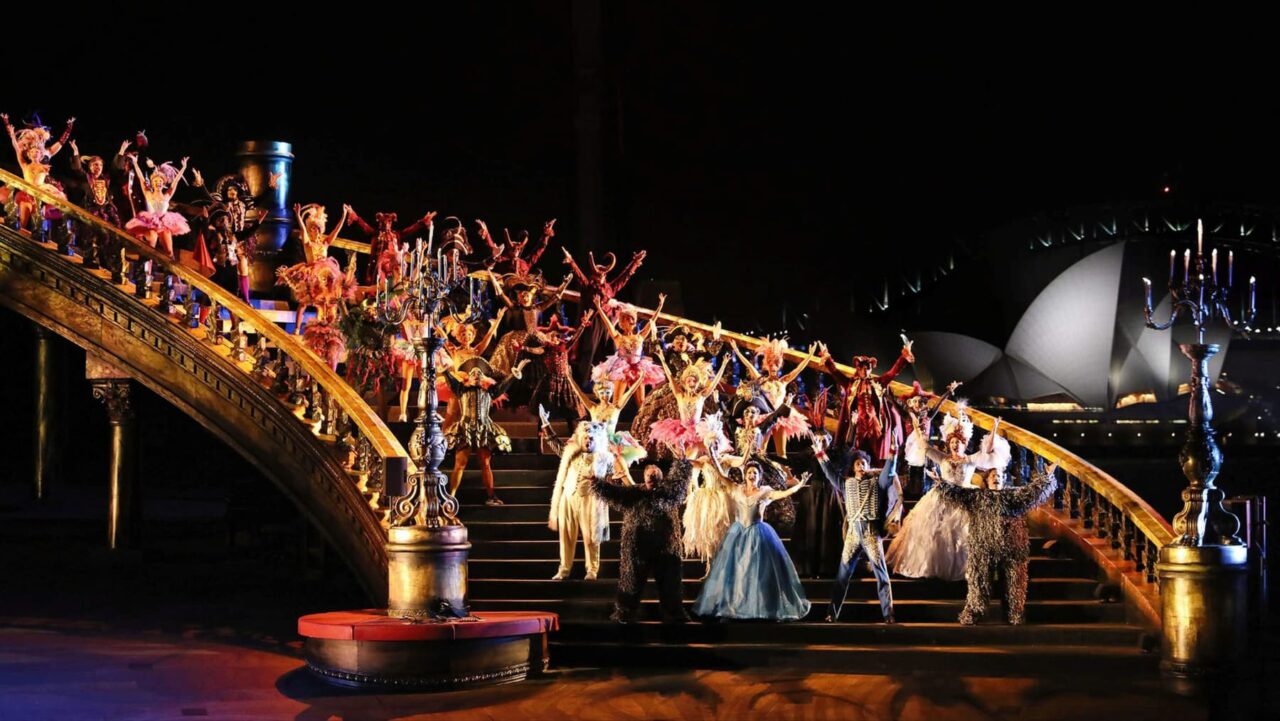
Ten top shows for 2026
| Show | Company / Venue | Dates / Notes | Booking Tip | |
| 1 | Whispering Jack: The John Farnham Musical | Sydney Theatre Company (Roslyn Packer Theatre) | Nov 15 – Dec 20, 2026. A world-premiere musical of Farnham’s story. Sydney Guide+2Variety Australia+2 | Season tickets available; this one will likely sell out fast. |
| 2 | Purpose | Sydney Theatre Company | Feb 2 – Mar 22, 2026. Australian premiere of a recent Pulitzer/Tony winner. Sydney Guide+1 | Book early for the Sydney premiere buzz. |
| 3 | My Brilliant Career | Sydney Theatre Company | Mar 21 – Apr 26, 2026. New Australian musical adaptation of the Miles Franklin novel. Sydney Guide+1 | Great for fans of Australian history and musicals. |
| 4 | Doubt: A Parable | Sydney Theatre Company | June 30 – Aug 2, 2026. Featuring screen stars in a major drama. Sydney Guide+1 | Premium seats may command higher prices—plan ahead. |
| 5 | The River | Sydney Theatre Company | Mar 30 – May 9, 2026. A Jez Butterworth play starring Miranda Otto. Sydney Guide+1 | Smaller theatre size → fewer seats → earlier booking essential. |
| 6 | Madama Butterfly | Opera Australia | Jan 2 – Mar 25, 2026. A staple of the opera calendar, helming the season kickoff. Sydney Opera House | Often includes pre-season ticket packages; look for those. |
| 7 | The Phantom of the Opera | Opera Australia | Mar 27 – Apr 6, 2026. A key production for the year (and one to watch, given recent company financial challenges). Sydney Opera House | Ensure pricing tiers are understood – premium vs value seats matter. |
| 8 | La Stupenda: A Joan Sutherland Celebration | Opera Australia | Aug 20 & 22, 2026. A star tribute for Dame Joan’s 100th birthday. Sydney Guide+1 | High-profile event – expect strong demand for special packages. |
| 9 | The Merry Widow | Opera Australia | Jul 8 – Aug 18, 2026. A lighter opera for the mid-year window. Sydney Opera House | Good opportunity for first-time opera goers – mid-season often more accessible. |
| 10 | Strong is the New Pretty | Sydney Theatre Company | 2026 (date to be confirmed). World-premiere play by Suzie Miller about the AFLW. sydneytheatre.com.au+1 | Unique theme, strong local interest – book early to avoid missing out. |

